LAB REPORT
Science and Technology Making Headlines
May 6, 2022

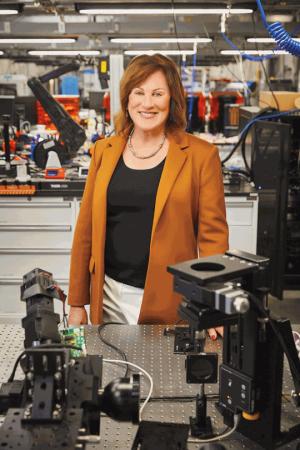
Every May, Diablo Magazine celebrates women who are making a difference. Whether they are helping women advance in tech careers, educating young people about the importance of sustainability or creating opportunities for female makers, these forward-thinking women all have one thing in common: a passion for making the world a better place. LLNL’s Beth McCormick is one of them.
A wonder woman
Beth McCormick, the director of strategic workforce development for engineering at the Lawrence Livermore National Laboratory, has reached the height of success in technology — and she’s passionate about supporting others on their paths to success.
“I really have two passion projects,” she said. “One is fostering the success of women in tech. As an engineer and a woman in tech, I’ve had a lot of experience with barriers and am very aware of gender bias. I want to be supportive of (women) and help them work through issues as they come along. And I’m in a great position to do that.”
To that end, McCormick leads the Engineering Women’s Council, which fosters the educational and career development of women engineers.

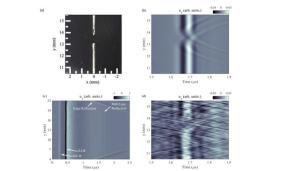
A LLNL team demonstrated that a diagnostic incorporating surface acoustic waves — generated by laser-based ultrasound — could effectively and accurately evaluate laser melt lines and find defects in laser powder bed fusion metal 3D printing by scattering acoustic energy from melt lines, voids and surface features that can be quickly detected. Images courtesy of David Stobbe/LLNL.
Tracking defect-producing features in 3D printing
Researchers at Lawrence Livermore have developed an all-optical ultrasound technique capable of performing on-demand characterization of melt tracks and detecting formation of defects in the laser powder bed fusion metal 3D-printing process. The team proposed a diagnostic using surface acoustic waves, generated by laser-based ultrasound, that can reveal tiny surface and subsurface defects in laser powder bed fusion (LPBF) metal 3D printing.
The team reported that its system can effectively and accurately evaluate laser melt lines — the tracks where the laser liquifies metal powder in LPBF printing — by scattering acoustic energy from melt lines, voids and surface features that can be quickly detected.
The team validated its findings using optical microscopy and X-ray computed tomography.

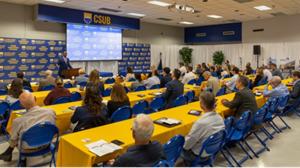
CSU Bakersfield Provost and Vice President for Academic Affairs Vernon Harper addresses the symposium. Photo by Scott Wilson/LLNL.
Carbon removal tech comes to Bakersfield
Roger Aines, Kim Mayfield and George Peridas with Lawrence LIvermore's Energy Program took part in a Carbon Sequestration Symposium last week hosted by the Carbon Energy Research Center at CSU Bakersfield.
Entitled “Carbon Sequestration Symposium: Opportunities and Challenges,” the virtual and in-person event was designed to engage the community, industry, policymakers and academia on the potential of carbon sequestration in the Bakersfield region and highlight the importance of data-based decision-making in sustainably and safely using carbon sequestration as a viable option to mitigate climate change.
Other participants included CSU Bakersfield President Lynnette Zelezny, California Energy Research Center’s Interim Director Anthony Rathburn, senior adviser to the U.S. Secretary of Energy Kate Gordon and several academic, research and industry representatives.
Event partners included LLNL, the Livermore Lab Foundation, the California Council on Science & Technology, Climate Now and the Carbon Cleanup Initiative.

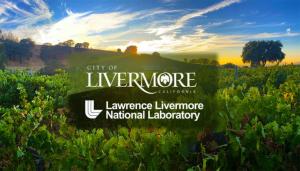
Lawrence Livermore National Laboratory signed a memorandum of understanding with the City of Livermore to collaborate on advancing climate action in Livermore and build community-wide resilience to climate change impacts.
Combatting climate change at home
The city of Livermore signed a memorandum of understanding with Lawrence Livermore National Laboratory that aims to bolster the climate action in Livermore and build a community-wide resilience to the impacts of climate change.
The Livermore City Council is expected to adopt the Climate Action Plan (CAP) this summer creating a roadmap to achieve carbon neutrality or net zero emissions by 2045. In addition, the CAP will include adaptation and resilience strategies to prepare Livermore for the changing climate.
"The opportunity to apply these initiatives right here at home is really important to us," LLNL Director Kim Budil said. "We're pleased to partner with our local community on projects that will help them adapt and become resilient when it comes to climate change."
Livermore City Manager Marc Roberts expressed gratitude for the collaboration with LLNL to bolster the city's effort to achieve carbon neutrality using innovative techniques.
"The city is committed to protecting the health and wellbeing of the Livermore community and with LLNL as a partner, we are confident we will reach our targets and become a model for other cities to follow," Roberts said.
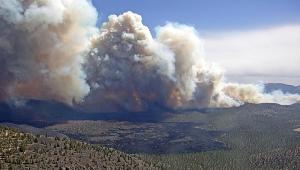
The Tunnel Fire, April 19, 2022, as seen from O’Leary Lookout in Northern Arizona. Photo courtesy of U.S. Forest Service.
Where there is no vapor, there is fire
Research by scientists at University of California, Los Angeles (UCLA) and Lawrence Livermore National Lab found that two-thirds (approximately 68 percent) of the increase in vapor pressure deficit (VPD) is due to human-caused climate change. Higher VPD contributes to the greater likelihood of wildfires.
“If mitigation efforts aren’t taken, wildfire activity in the western United States will increase, resulting in significant impact on human lives, human health and the economy,” said climate scientist Benjamin Santer.
“Our results suggest that the western U.S. appears to have passed a critical threshold, and the dominant control on the fire weather variation has changed from natural climate variability to anthropogenically caused warming,” explained UCLA’s Rong Fu, who led the study. “The trend toward increasing wildfire risk will likely continue over the western U.S. for decades to come.”
2020 was a record-breaking fire season in the history of the western US, especially in California, Oregon and Washington. According to the National Interagency Fire Center, the total area burned in these three states reached 8.8 million acres. Recent studies of fire behavior in the region indicate that warming due to climate change is increasing not only the area burned by fires, but also fire frequency, fire intensity and fire season length.





